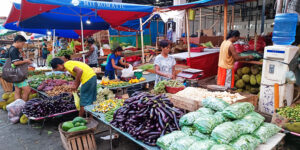
In a recent interview on the ABS-CBN News Channel, aerosol expert and chemistry professor from the University of Colorado-Boulder Jose-Luis Jimenez raised a hubbub when he said that plastic barriers and face shields do not reduce the spread of infectious diseases that undergo airborne transmission such as COVID-19.
“Face shields are outdated. At the beginning of the pandemic, we saw that when two people talk, there were some projectiles, these droplets, were flying through the air and a face shield could intercept them,” Jimenez said.
“Now we know that’s not the case. It’s like smoke, and the smoke can go under the face shield. So face shields, basically, are useless except in a hospital,” he added. He also stressed that the public must use their money to buy better masks and “things that actually work.”
Jimenez’ statements provoked discussions and arguments as it flies against the insistence of the country’s Department of Health that plastic coverings provide an additional layer of protection. The Philippines is one of the few countries in the planet that advocate the use of face shields, requiring its use in public spaces throughout most of the pandemic. Face shields are thankfully no longer required in areas under Alert Level 3 or lower.
Adding fuel to the fire, Jimenez also said that plastic barriers in schools holding in-person classes and the infamous motorcycle barriers actually increase transmission.
A study from John Hopkins published in June 2021 suggested that plastic barriers in classrooms were associated with an increased risk of COVID-19 infection. A study looking at schools in Massachusetts found plexiglass dividers with side walls were impeding air flow.
Scientists have been pointing out that there is strong evidence that COVID-19 spreads by airborne transmission. The World Health Organization had long held that the coronavirus is transmitted primarily through droplets when an infected person coughs, sneezes or speaks. It took until 2021 for the WHO and the US Centers for Disease Control and Prevention to acknowledge that airborne spread is a major route of COVID-19 infections.
Scientists have been calling policymakers to work with them to design better strategies to combat the pandemic. The more infectious Omicron variant powered surge the planet is currently experiencing should be a reminder to those in charge that as the virus adapts and mutates, so should our strategies. If face shields and the ubiquitous plastic barriers are proven counterproductive, our efforts to contain the virus should be redirected towards measures that can help, such as focusing on improving ventilation in classrooms and public spaces.*







